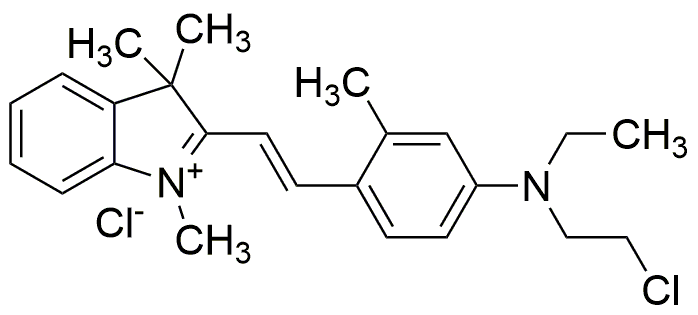Astrazon red 6B is widely utilized in research focused on:
- Dye Manufacturing: This compound is primarily used in the textile industry to produce vibrant red dyes for fabrics, ensuring colorfastness and durability.
- Biological Staining: In laboratories, it serves as a staining agent for biological samples, helping researchers visualize cellular structures under a microscope.
- Cosmetic Formulations: It is incorporated into cosmetic products, providing color to items such as lipsticks and nail polishes while adhering to safety regulations.
- Art Supplies: Artists utilize this chemical in paints and inks, benefiting from its bright hue and excellent lightfastness, making artworks more enduring.
- Research and Development: In chemical research, it is used as a model compound for studying dye behavior and interactions, aiding in the development of new dye technologies.
General Information
Properties
Safety and Regulations
Applications
Astrazon red 6B is widely utilized in research focused on:
- Dye Manufacturing: This compound is primarily used in the textile industry to produce vibrant red dyes for fabrics, ensuring colorfastness and durability.
- Biological Staining: In laboratories, it serves as a staining agent for biological samples, helping researchers visualize cellular structures under a microscope.
- Cosmetic Formulations: It is incorporated into cosmetic products, providing color to items such as lipsticks and nail polishes while adhering to safety regulations.
- Art Supplies: Artists utilize this chemical in paints and inks, benefiting from its bright hue and excellent lightfastness, making artworks more enduring.
- Research and Development: In chemical research, it is used as a model compound for studying dye behavior and interactions, aiding in the development of new dye technologies.
Documents
Safety Data Sheets (SDS)
The SDS provides comprehensive safety information on handling, storage, and disposal of the product.
Product Specification (PS)
The PS provides a comprehensive breakdown of the product’s properties, including chemical composition, physical state, purity, and storage requirements. It also details acceptable quality ranges and the product's intended applications.
Certificates of Analysis (COA)
Search for Certificates of Analysis (COA) by entering the products Lot Number. Lot and Batch Numbers can be found on a product’s label following the words ‘Lot’ or ‘Batch’.
Numéro de catalogue
Numéro de lot/série
Certificates Of Origin (COO)
This COO confirms the country where the product was manufactured, and also details the materials and components used in it and whether it is derived from natural, synthetic, or other specific sources. This certificate may be required for customs, trade, and regulatory compliance.
Numéro de catalogue
Numéro de lot/série
Safety Data Sheets (SDS)
The SDS provides comprehensive safety information on handling, storage, and disposal of the product.
DownloadProduct Specification (PS)
The PS provides a comprehensive breakdown of the product’s properties, including chemical composition, physical state, purity, and storage requirements. It also details acceptable quality ranges and the product's intended applications.
DownloadCertificates of Analysis (COA)
Search for Certificates of Analysis (COA) by entering the products Lot Number. Lot and Batch Numbers can be found on a product’s label following the words ‘Lot’ or ‘Batch’.
Numéro de catalogue
Numéro de lot/série
Certificates Of Origin (COO)
This COO confirms the country where the product was manufactured, and also details the materials and components used in it and whether it is derived from natural, synthetic, or other specific sources. This certificate may be required for customs, trade, and regulatory compliance.


